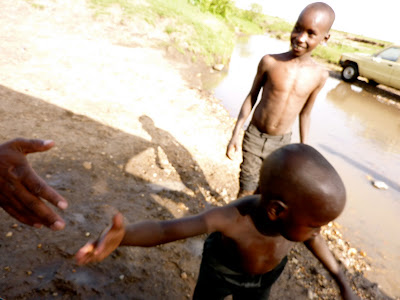A Journalist’s War Stories
Everyone in Sarajevo has war stories or memories, at least comparisons to make about before and after the brutal 1990s siege, but none brings the time back so vividly as Aida Cherkez. A mutual friend describes her as Bosnia’s post-war Nora Ephron. She puts it this way. “I’ve erased everything,” she said, “and those years have become a Monty Python Show in my head.”
It’s true, I’ve heard her retell some of the same stories more than once, rehearsing, playing with the timing of them. Friends request certain tales, as they would a certain song if she were a musician. We all urge her to write a book.
Cherkez is the bureau chief in Bosnia for the Associated Press where she’s worked since during the war, a serious journalist. But her war stories glint with mischief and a love of her hometown that comes from knowing it before it became a synonym for battleground.
“I can’t tell you,” she will say talking about those innocent pre-war days when Sarajevo was an Olympic city, “how unimportant it was who we were. When I married my first husband, I didn’t know that he was Serb.”
She is Muslim.
School kids grew up with friends who were also Muslim, or Croat or Serbian. “As kids we’d skip school, math especially. And one day we were out of school and thinking ‘What do we do?’ We started smoking and when you are kids, smoking means you have a pack and you smoke it all, right?
“And this boy said he will go into the Hadz Mosque. It’s still there, the one near Inat Kuca (a restaurant on the city’s western edge).
“Late afternoon he sneaked into a room of the mosque – there was a little record player. They didn’t actually sing from the minaret. They broadcast the music. He was gonna change that record and we would see what happened.
“We sat around smoking in the graveyard next door and waiting for the call to prayer . Then suddenly Mick Jagger was singing, and “Angie” is ringing out across the city.
“If that happened now,” Aida adds with a laugh. “ Can you imagine? The High Representative would be there. They’d call an international conference.”
She had worked in a bank and in a casino, got married and had a son, and was in her late 20s when war came in 1992. Bosnian Serbs set up a firing line around the mountains down into the city. So Aida signed up. She was, she says, “embarrassed to sit in cellar listening to the shelling and let someone else save me.”
“But the army didn’t really know what to do with women in the beginning,” of hostilities that would go on for more than three years. Her first assignment was grating green chalk and mixing it with Nivea face cream to make camouflage.
But she’d studied German and picked up English so before long she was an assistant to Gen. Mustafa Talijan, in charge of the defense of Sarajevo and head of what she calls the Bosnian Army’s International Press Center. It was, she says, “basically a room that had me in it and a power supply. You’d plug in your sat (satellite) phone and put in whatever I would tell you.” She talked until the general kicked the pocket door that separated the press center from his cubicle three times. That meant he wanted coffee.
Cherkez shipped her infant son with her mother to Germany to get away from a war that went on and on. The two women, both stressed about killings and money and separation, fought ferociously over everything on the phone including how to raise the boy. Then one day her mother told her angrily, “Look, I am in Germany because I’m taking take of your child. But I left my child there!
“After that, I never argued with her,” Cherkez said.
Cherkez went eventually from working with reporters to working as one. She became part of an Associated Press team housed in the Belvedere Hotel covering the vicious war. And this is her story of the Tripod Cow.
“The hotel owner had signed a contract with the AP that required him to supply so much food including meat” to the news team. That got harder and harder to live up to as the siege around Sarajevo tightened, but “somehow one August he got a cow,” Cherkez says. “I don’t know where. He probably bought it from a Serb. He thought he could feed us off of that for a while. But there was no refrigeration, no ice.
“So his idea was to get a surgeon from Kosovo Hospital and have him amputate one leg. Then he could keep the cow until he needed more meat. I had a friend who was a surgeon and the two of them had a major moral and philosophical discussion over this. He said, ‘You do it all the time to people.’ ‘Yes,’ she said, to save their lives. This would just prolong the cow’s misery. Utlimately this will cause his death.’” To which the hotelier responded “Look, this cow will die with or without you.”
“My friend telling us this, Cherkez adds, “said that she had been waiting for months, wondering, ‘Will I notice the moment when we collectively go insane?’ This was that moment in the war.”
Eventually the cow was slaughtered without surgical assist and the AP staff had a feas, calling in every friend and relative they could.
After all, Cherkez rationalizes the favoritism, “All is fair in love and war.”





















































